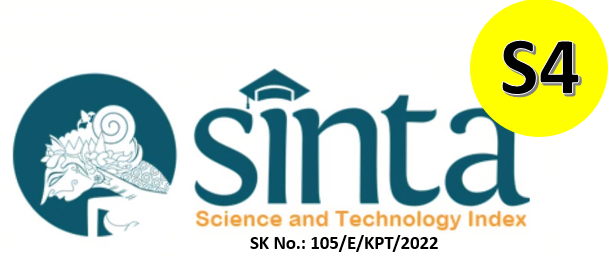Analisis Uji Toksisitas Akut Logam Cu Terhadap Artemia salina dan Daphnia magna
DOI:
https://doi.org/10.29080/alard.v7i1.1333Keywords:
Artemia salina, Cu, Daphnia magna, Uji Toksisitas AkutAbstract
Water pollution can become dangerous if consumed. River could be polluted with some materials namely heavy metal of chopper (Cu). Heavy metals that are accidentally consumed by human body through the skin surface, some through the respiratory or digestive tract and then accumulate in the body over time. To make an early detection of heavy metal and water quality in water bodies, some animals or plants were used. Several types of crustaceans such as Artemia salina and Daphnia magna or commonly referred to as bio indicators. This study analyze comparison of acute toxicity test that represented by LC50 value of Cu in Artemia salina and Daphnia magna. From the research result it was found that Artemia salina and Daphnia magna gave a toxic effect with LC50 values of 11.78 ppm and 7.87 ppm, respectively.
Downloads
References
Bownik, A. (2017). Daphnia swimming behaviour as a biomarker in toxicity assessment: A review. Science of the Total Environment, 601–602, 194–205. https://doi.org/10.1016/j.scitotenv.2017.05.199
Chain, F. J. J., Finlayson, S., Crease, T., & Cristescu, M. (2019). Variation in transcriptional responses to copper exposure across Daphnia pulex lineages. Aquatic Toxicology, 210(February), 85–97. https://doi.org/10.1016/j.aquatox.2019.02.016
Christin, F., Elystia, S., & Elvi, Y. (2015). Uji Toksisitas Akut Limbah Cair Tahu terhadap Daphnia Magna dengan Metode Renewal Test. JOM FTEKNIK, 2(2), 1–9.
de Castro-Català, N., Kuzmanovic, M., Roig, N., Sierra, J., Ginebreda, A., Barceló, D., Pérez, S., Petrovic, M., Picó, Y., Schuhmacher, M., & Muñoz, I. (2016). Ecotoxicity of sediments in rivers: Invertebrate community, toxicity bioassays and the toxic unit approach as complementary assessment tools. Science of the Total Environment, 540, 297–306. https://doi.org/10.1016/j.scitotenv.2015.06.071
Denton, D. L., Miller, J. M., & Stuber, R. A. (2010). EPA Regions 8, 9 and 10 toxicity training tool (TTT).
Desriyani, R., Wardhani, E., & Pharmawati, K. (2015). Identifikasi Pencemaran Logam Berat Timbal ( Pb ) pada Perairan Sungai Citarum Hulu Segmen Dayeuhkolot sampai Nanjung. Jurnal Lingkungan Teknik Lingkungan Ienas, 3(1), 1–12.
Edwin, T., Ihsan, T., & Pratiwi, W. (2017). Acute Toxicity Test Of Metal Lead ( Pb ), Chromium ( Cr ) And Cobalt ( Co ) on Daphnia magna. Jurnal Teknik Lingkungan UNAND, 14(1), 33–40.
Ginebreda, A., Kuzmanovic, M., Guasch, H., de Alda, M. L., López-Doval, J. C., Muñoz, I., Ricart, M., Romaní, A. M., Sabater, S., & Barceló, D. (2014). Assessment of multi-chemical pollution in aquatic ecosystems using toxic units: Compound prioritization, mixture characterization and relationships with biological descriptors. Science of the Total Environment, 468–469, 715–723. https://doi.org/10.1016/j.scitotenv.2013.08.086
Khotimah, K. N. (2018). Uji Toksisitas IPAL Komunal di Kecamatan Bantul Menggunakan Metode Whole Effluent Toxicity (Wet) pada Daphnia magna (Vol. 148).
Lazorchak, J. M., Hill, B. H., Brown, B. S., McCormick, F. H., Engle, V., Lattier, D. J., Bagley, M. J., Griffith, M. B., Maciorowski, A. F., & Toth, G. P. (2003). Chapter 23 USEPA biomonitoring and bioindicator concepts needed to evaluate the biological integrity of aquatic systems. Trace Metals and Other Contaminants in the Environment, 6(C), 831–874. https://doi.org/10.1016/S0927-5215(03)80153-4
Lezcano, A. H., Rojas Quiroga, M. L., Liberoff, A. L., & Van der Molen, S. (2015). Marine pollution effects on the southern surf crab Ovalipes trimaculatus (Crustacea: Brachyura: Polybiidae) in Patagonia Argentina. Marine Pollution Bulletin, 91(2), 524–529. https://doi.org/10.1016/j.marpolbul.2014.09.038
Nugroho, H., Pasaribu, M., Ismail, S., Obstetri dan Ginekologi RSUD Abdul Wahab Sjahranie, S., & Penelitian Obat dan Kesehatan Masyarakat Lembaga Penelitian dan Pengabdian Kepada Masyarakat, P. (2018). Toksisitas akut ekstrak Albertisia papuana Becc. pada Daphnia magna dan Danio rerio. Biota, 3(3), 96–103.
Pemerintah Republik Indonesia. (2001). Peraturan Pemerintah tentang Pengelolaan Kualitas Air Dan Pengendalian Pencemaran Air. Pemerintah Republik Indonesia, 1–22.
Pratiwi, D. Y. (2020). Dampak Pencemaran Logam Berat (Timbal, Tembaga, Merkuri, Kadmium, Krom) terhadap Organisme Perairan dan Kesehatan Manusia. Jurnal Akuatek, 1(1), 59–65.
Reis, D. B., Acosta, N. G., Almansa, E., Navarro, J. C., Tocher, D. R., Andrade, J. P., Sykes, A. V., & Rodríguez, C. (2017). Comparative study on fatty acid metabolism of early stages of two crustacean species: Artemia sp. metanauplii and Grapsus adscensionis zoeae, as live prey for marine animals. Comparative Biochemistry and Physiology Part - B: Biochemistry and Molecular Biology, 204, 53–60. https://doi.org/10.1016/j.cbpb.2016.11.002
Schmitt, O. J., Brunetto, G., Chassot, T., Tiecher, T. L., Marchezan, C., Tarouco, C. P., De Conti, L., Lourenzi, C. R., Nicoloso, F. T., Kreutz, M. A., & Andriolo, J. L. (2020). Impact of Cu concentrations in nutrient solution on growth and physiological and biochemical parameters of beet and cabbage and human health risk assessment. Scientia Horticulturae, 272(June), 109558. https://doi.org/10.1016/j.scienta.2020.109558
Zhang, T., Ruan, J., Zhang, B., Lu, S., Gao, C., Huang, L., Bai, X., Xie, L., Gui, M., & Qiu, R. liang. (2019). Heavy metals in human urine, foods and drinking water from an e-waste dismantling area: Identification of exposure sources and metal-induced health risk. Ecotoxicology and Environmental Safety, 169(October 2018), 707–713. https://doi.org/10.1016/j.ecoenv.2018.10.039
Downloads
Published
How to Cite
Issue
Section
License
Authors who publish with this journal agree to the following terms:
- Authors retain copyright and grant the journal right of first publication with the work simultaneously licensed under a Creative Commons Attribution License that allows others to share the work with an acknowledgement of the work's authorship and initial publication in this journal.
- Authors are able to enter into separate, additional contractual arrangements for the non-exclusive distribution of the journal's published version of the work (e.g., post it to an institutional repository or publish it in a book), with an acknowledgement of its initial publication in this journal.
- Authors are permitted and encouraged to post their work online (e.g., in institutional repositories or on their website) prior to and during the submission process, as it can lead to productive exchanges, as well as earlier and greater citation of published work.



